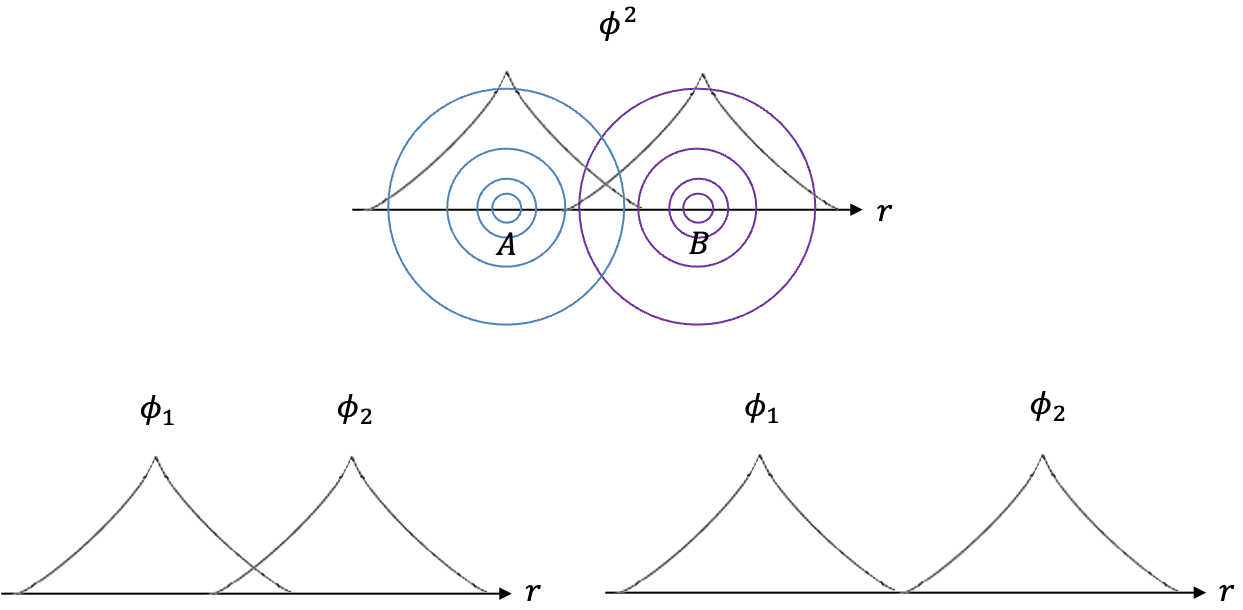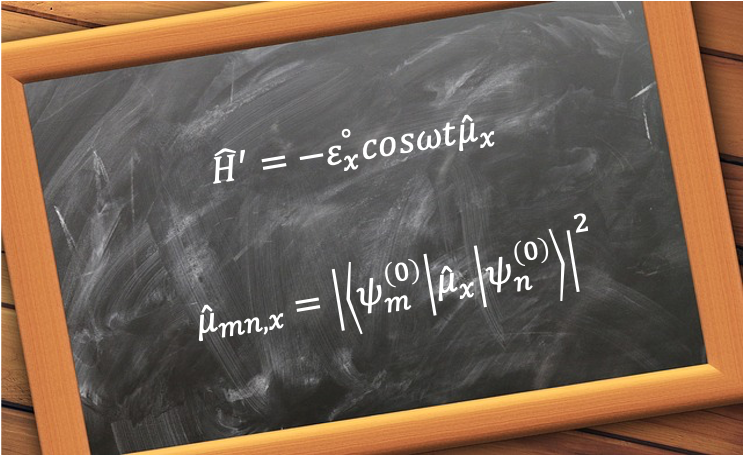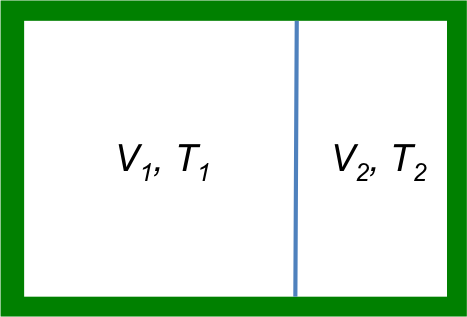A molecular orbital (MO) diagram is a drawing that depicts the energy levels associated with wave functions that describe chemical bonds in molecules. These wave functions are called MO wave functions. For small molecules, we can construct them via the following steps:
-
- Establish the symmetry-adapted linear combination (SALC) wave functions of the peripheral atoms of the molecule.
- Match the symmetries of the valence wave functions of the atomic orbitals (AO) of the central atom with those of the SALC wave functions of the peripheral atoms.
- Take linear combinations of AO wave functions (LCAO) of the central atom and an SALC wavefunction of the peripheral atoms of the same symmetry and phase to approximate the bonding orbitals.
- Change the coefficients of the LCAOs to generate trial MOs, which are then subjected to the Hartree-Fock-Roothaan procedure to determine their energies.
Consider that belongs to the
point group. Chemical bonds are formed by the overlapping of the central nitrogen atom’s valence AOs (described by the wave functions
) with the three hydrogen atoms’ SALCs, which were established in the previous article as
,
and
.
According the principle of vanishing integrals, a non-zero overlap of an AO of nitrogen and an SALC possibly occurs when the AO and the SALC transform according to the same irreducible representation of the point group. We can therefore approximate the bonding orbitals of
by taking the linear combinations of the appropriate AO and SALC as shown in the table below.
| AO of nitrogen | SALC ( |
LCAO | MO | |
Although many possible MOs can be generated from the LCAOs, the calculated energies of the ones listed in the table correlate well with experimental values.

Question
Is it a coincidence that the number of MOs associated with an LCAO is equal to the number component orbitals of the LCAO?
Answer
It is an assumption that the number of MOs associated with an LCAO is equal to the number component orbitals of the LCAO. Otherwise, there would not be enough MOs to accommodate the electrons of doubly occupied component orbitals of an LCAO.
The resultant MO diagram of consists of three columns of orbitals (see diagram below). The middle column contains MOs, while the left column and the right column list the valence AOs of nitrogen and the SALCs of the peripheral hydrogen atoms respectively. Horizontal lines represent energy level of orbitals and tie lines indicate the AOs and SALC that used to construct an MO.

MOs are classified into three categories, namely, bonding MOs, anti-bonding MOs and non-bonding MOs.
Bonding MOs () are formed when the overlapping wavefunctions of AOs and SALC are in-phase, which leads to constructive interference, and hence a build-up of electron density, between the bonding nuclei (see diagram below). The positively-charged nuclei are attracted to the region of higher electron density, resulting in a more stable system. Consequently, a bonding MO has a lower energy than the AOs and SALC from which it is formed.

Anti-bonding MOs () are due to the overlapping wavefunctions of AOs and SALC being significantly out-of-phase, which results in destructive interference, and therefore a node, between the bonding nuclei. The nuclei are attracted to the non-nodal electron densities, away from the internuclear region. This causes a destabilisation of the system (if the MO is occupied) and the anti-bonding MO having a higher energy than the AOs and SALC from which it is formed.
Non-bonding MOs () are formed when the overlapping wavefunctions of AOs and SALC are partially out-of-phase. A non-bonding MO shows neither charge depletion nor charge accumulation between the nuclei. Electrons in such an MO neither contribute to nor reduce bond strength. Therefore, it has approximately the same energy as the AOs and SALC from which it is formed.

Question
Explain, using the Hartree-Fock method, the relative energy levels of the three types of MOs.
Answer
In the Hartree-Fock method, , where
is the one-electron integral,
is the coulomb integral and
is the exchange integral. The values of
,
and
are negative, positive and positive respectively, with
and where
. Substituting the LCAOs of
,
and
into
, we have
When is expanded, each of the nine integrals gives a negative value.
is less negative than
due to one negative coefficient of
and
is less negative than
due to two negative coefficients of
. Since
,
is less negative than
, which is less negative than
. Furthermore, some of the nine integrals in
partially cancel out each other due to one negative coefficient of
, giving a resultant value that is close to
or
. This is why a non-bonding MO has approximately the same energy as the AOs and SALC from which it is formed.












